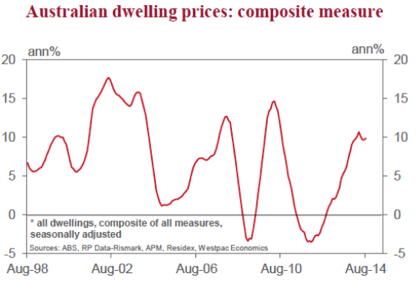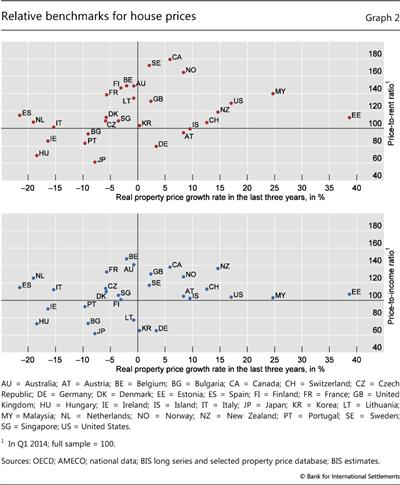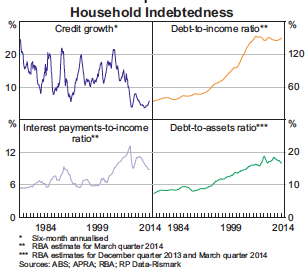Housing: the curse that keeps on cursing
Momentum is building for some kind of macroprudential policy control on Australian housing.
The International Monetary Fund has strongly supported direct controls on lending in its brief to the G20 finance meeting in Cairns over the weekend.
“Completing the reform of financial regulation and deploying macroprudential tools as a first line of defense, as needed, are essential to limit financial risks,” the IMF said.
The main thing that the term 'macroprudential' refers to is some kind of restriction on loan-to-value ratios, which neither the Reserve Bank of Australia nor the Australian Prudential Regulation Authority want. But it may be just a matter of time before Australia follows New Zealand down that path.
The urge for home ownership is one of the most powerful in the human condition, but it is also the curse that keeps on cursing.
Australian house prices have gone up about 16 per cent in the past two years, less than half as much as the share prices of the major banks, and credit growth is less than a third what it was in the last housing boom the years ago. Yet there is growing anxiety -- almost hysteria -- about a housing 'bubble' in Australia.
In fact, national house price growth appears to have peaked at 10 per cent annualised, far less than previous booms.

So why is there always such a dread around rising house prices?
Because of leverage, combined with the constant threat of monetary policy.
Houses are the most leveraged of all assets, and as prices rise they tend to be leveraged some more. That means it takes only a small decline in price and a small increase in unemployment due to rising interest rates to leave the 'owners' underwater and the banks facing a crisis.
As a result, housing is responsible for more banking crises through history than anything else.
For example, the October 1987 sharemarket crash did not result in a financial crisis and recession, but the fall in house prices and increase in unemployment two years later did.
The subprime mortgage crisis of 2007-08 was far worse for the global economy than the sharemarket crash of 2000 following the dot-com bubble.
In a column in the Financial Times last week, Martin Wolf wrote: “Collectively, we have made a huge bet on leveraging up the housing stock. This has gone very badly. If we are to avoid future disasters, this aspect of our financial arrangements needs reconsideration and reform.”
He also pointed out that most countries subsidise housing in some way. Wolf didn’t mention Australia, but here we subsidise it by allowing negative gearing and tax-free capital gains on the primary residence.
The Bank for International Settlements last week published a paper on residential property prices across the globe, which included this chart:

The key thing to note is that real property price growth in Australia over the past three years has been a little less than zero (ie, no bubble), but the price-to-income ratio here is the second highest in the world.
Yet according to the Reserve Bank, indicators of household indebtedness are showing little stress:

Anecdotally rising prices this year are encouraging a greater appetite for debt on both sides of the ledger. Loan-to-value ratios of more than 90 per cent are commonplace.
At the heart of the problem, in my view, is the fact that monetary policy, which is aimed at controlling inflation and increasing employment, mainly works through housing.
The Reserve Bank’s cash rate target moves mortgage interest rates, which in turn regulates household demand, which in turn regulates inflation and employment.
In the minutes of its last board meeting issued last week, the RBA worried that “additional speculative demand could amplify the property price cycle and increase the potential for property prices to fall later”, which has encouraged a near-hysteria about a supposed housing bubble in Australia.
Yet as Bill Evans of Westpac observed in a note last week: “With the Bank forecasting growth momentum in the at a woeful 2 per cent (annualised pace) in the second half of 2014 and a below-trend 3 per cent in 2015, raising interest rates looks like a viable option.”
Most recessions are caused by monetary policy overshooting because its effect on inflation and employment is so muffled.
The one in 2008 looks like an exception because US housing seemed to spontaneously combust, but in fact the Federal Reserve increased interest rates from 1 per cent in 2004 to 5.25 per cent in 2006-07.
So the question for Australian policymakers now must be whether macroprudential policies should be introduced to more directly control lending for housing.
New Zealand has done it, Martin Wolf in the FT says it must be done, and now the IMF has supported it.









